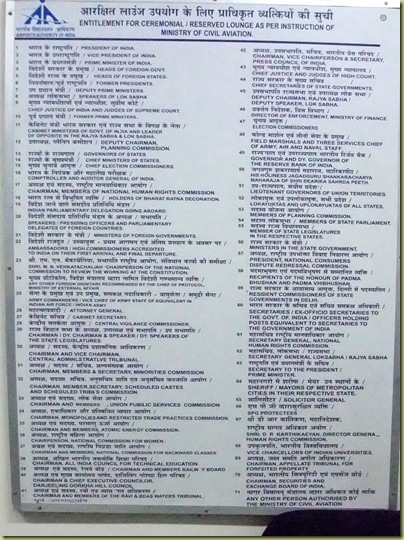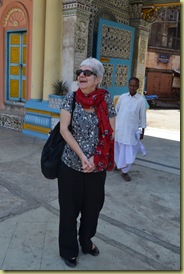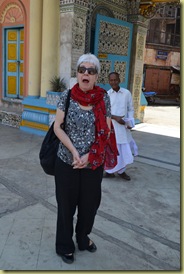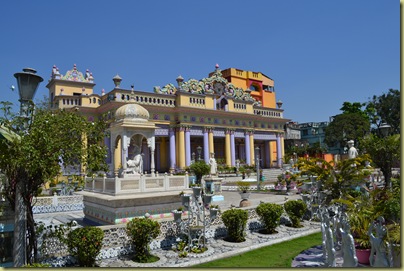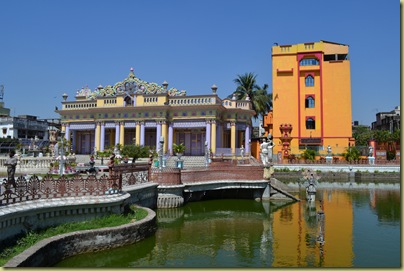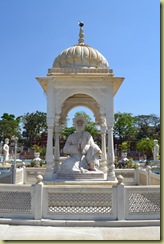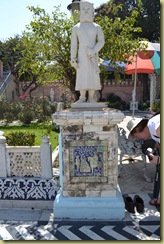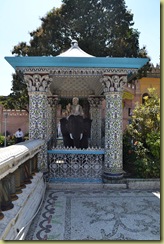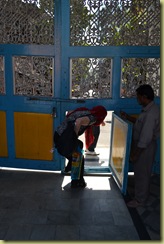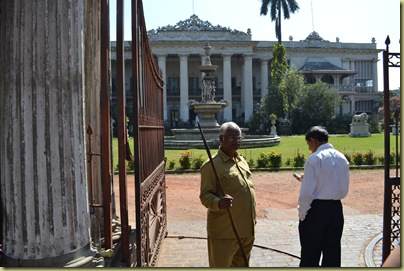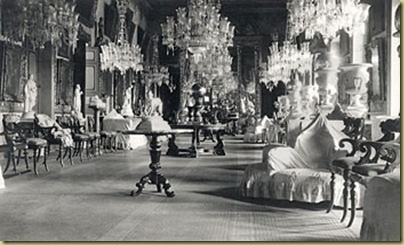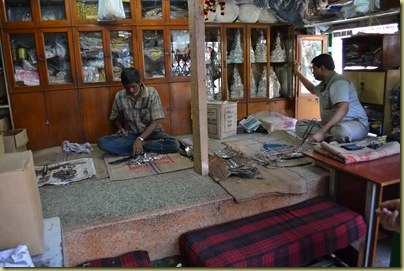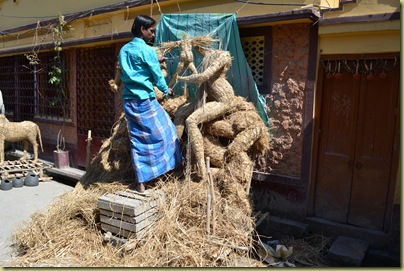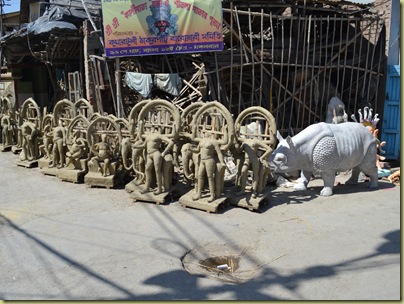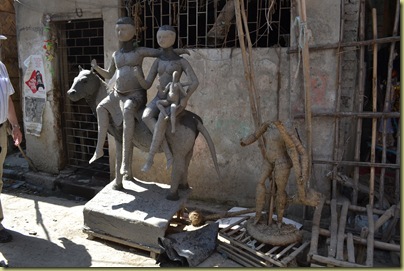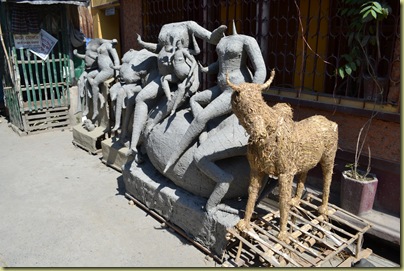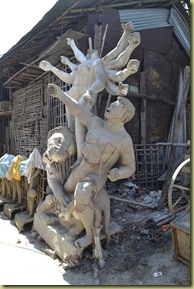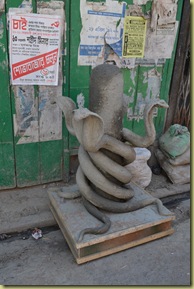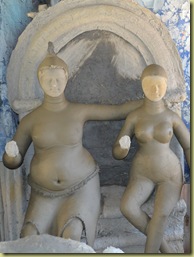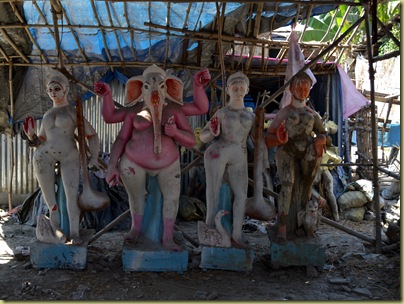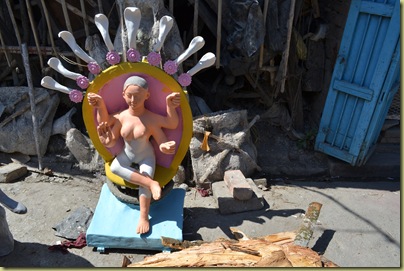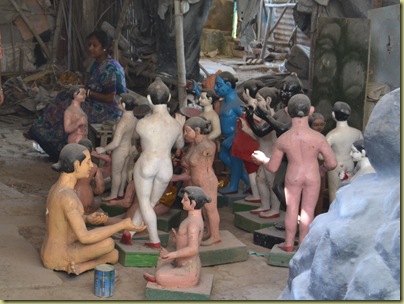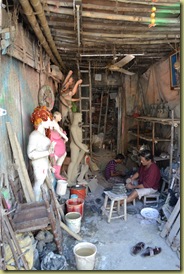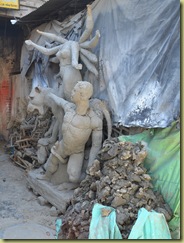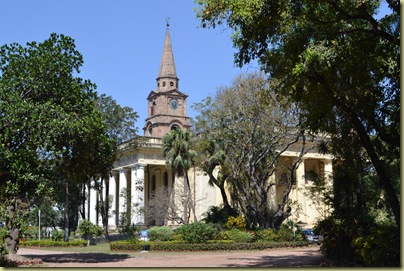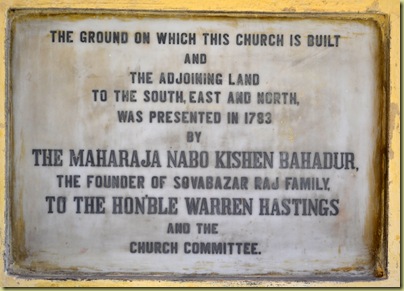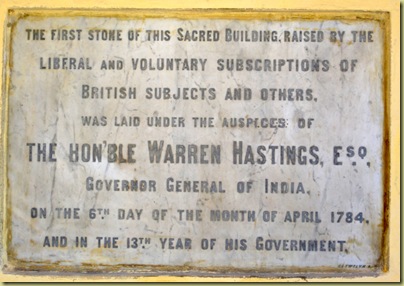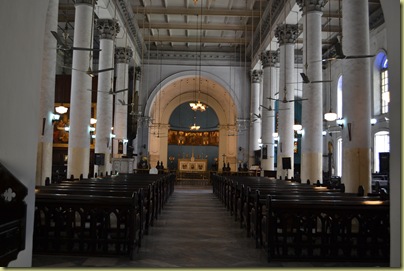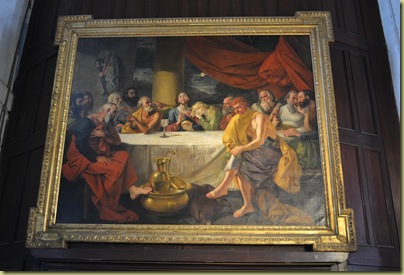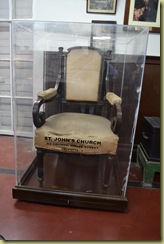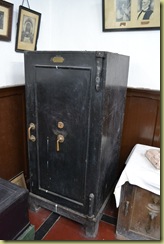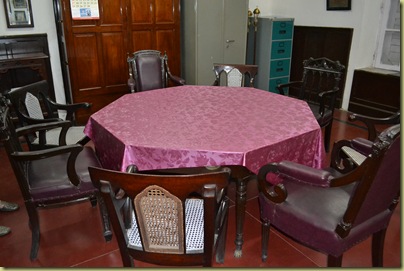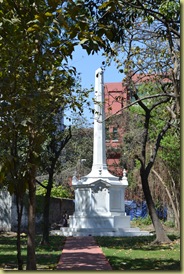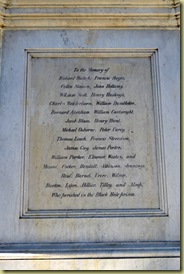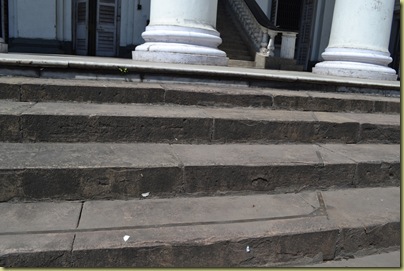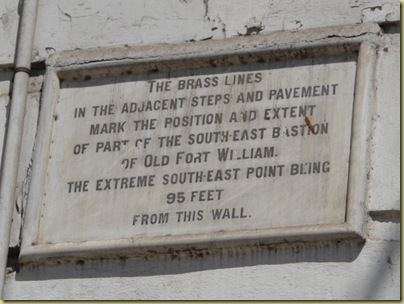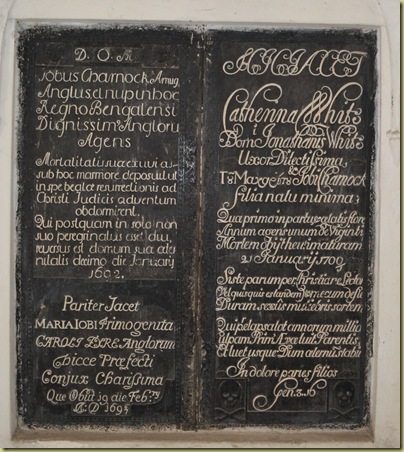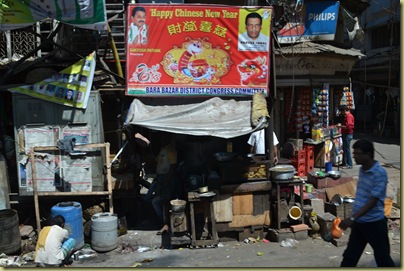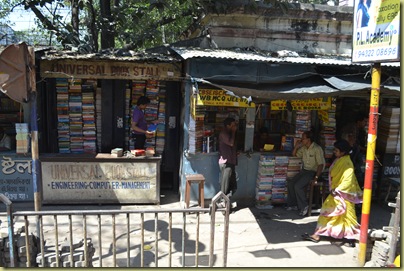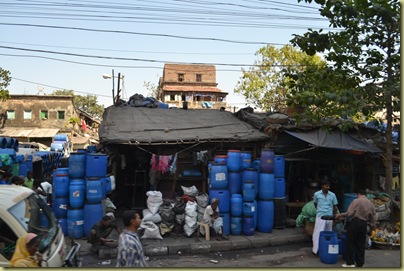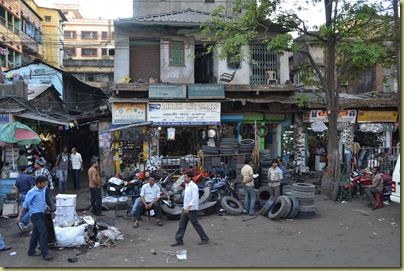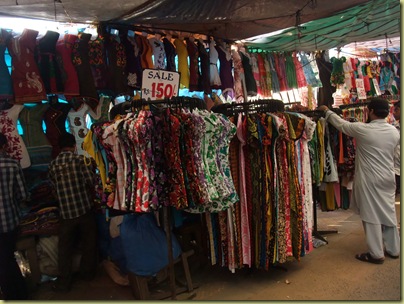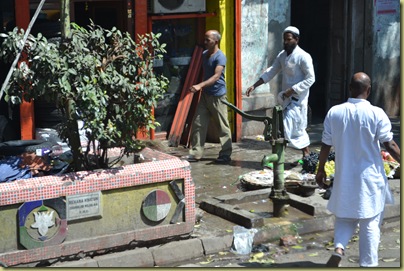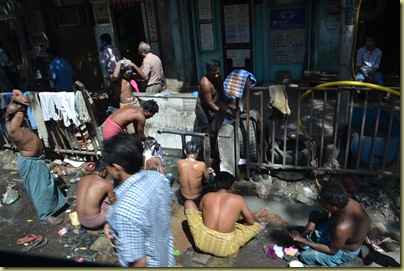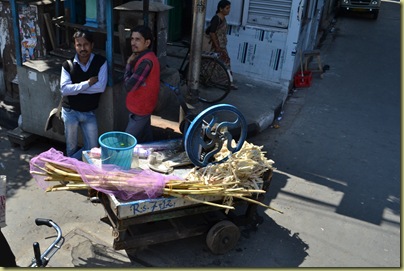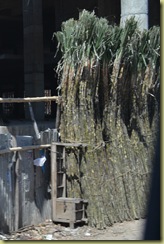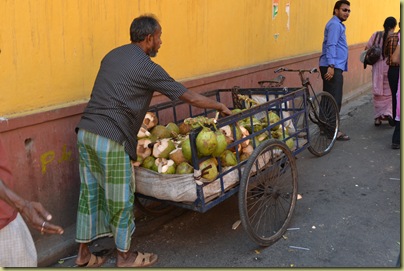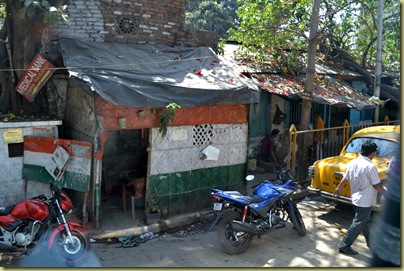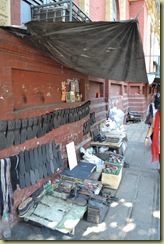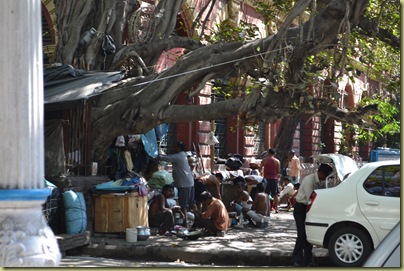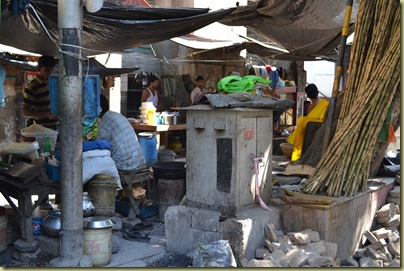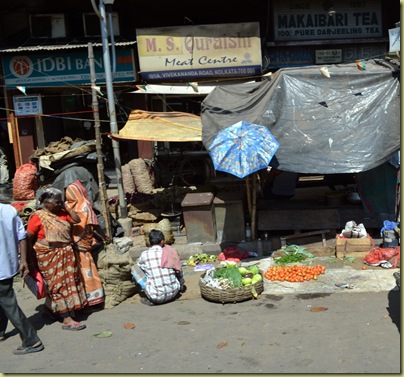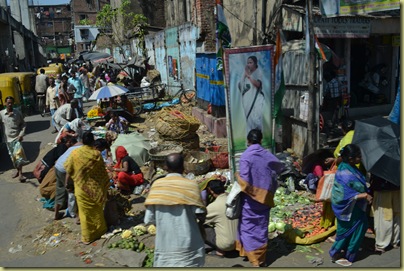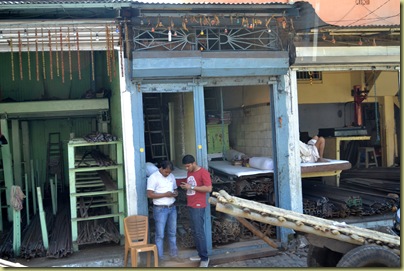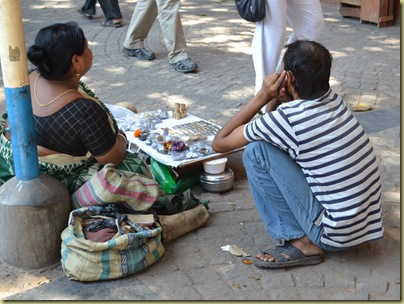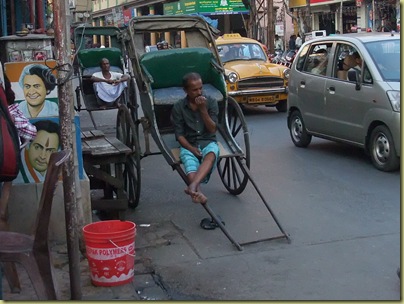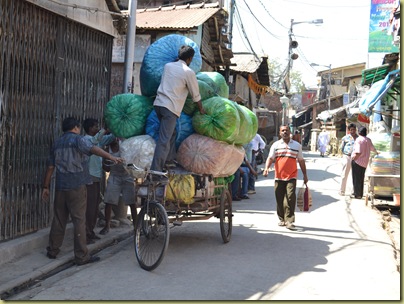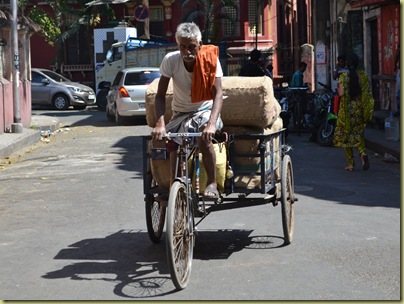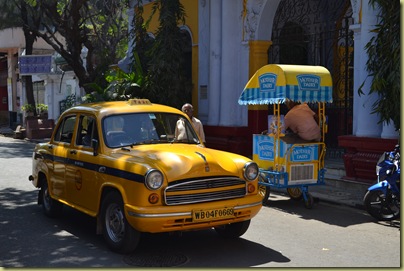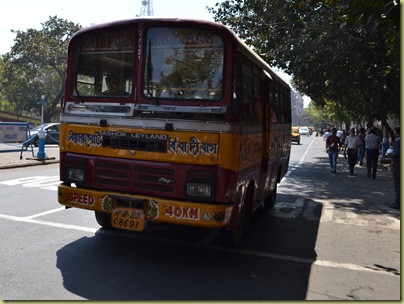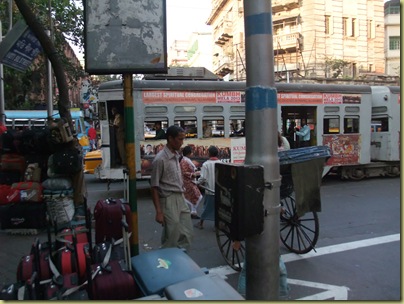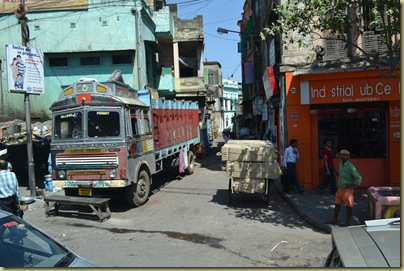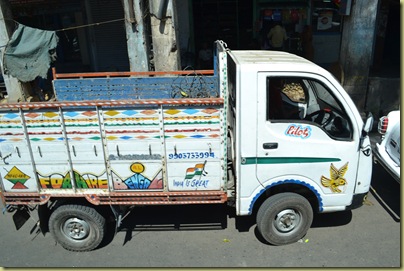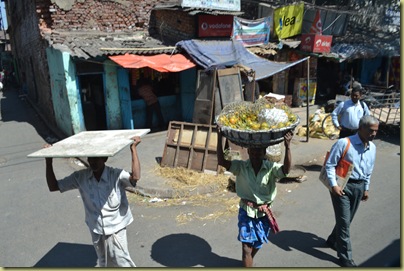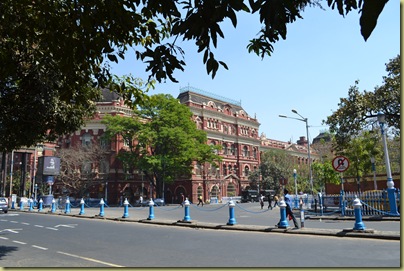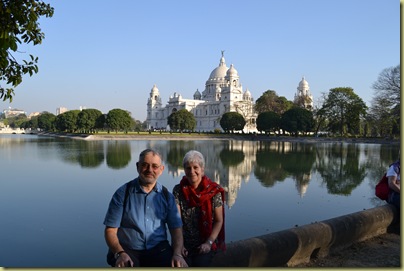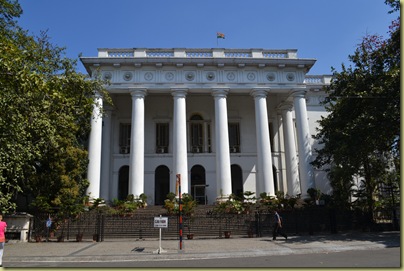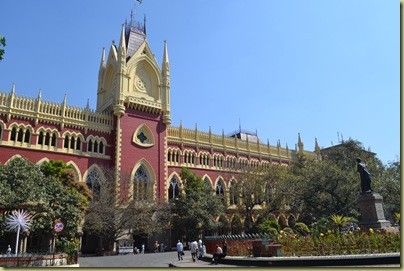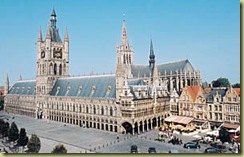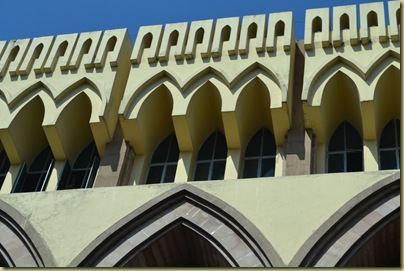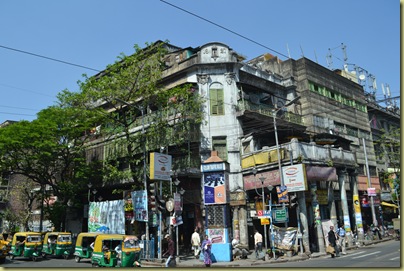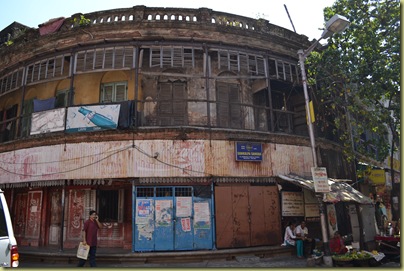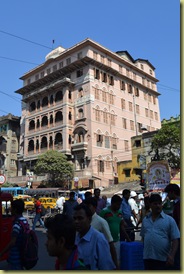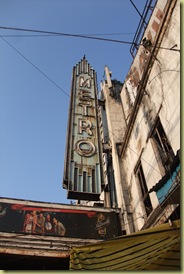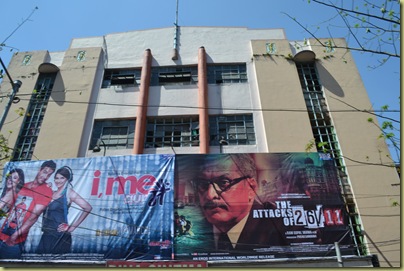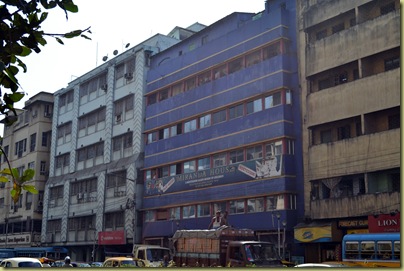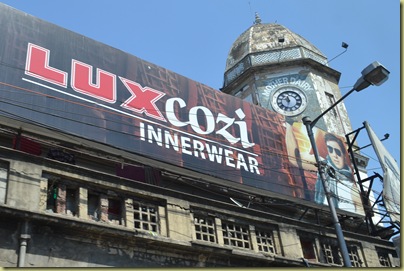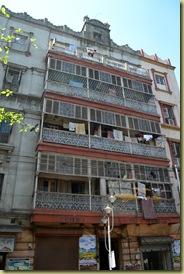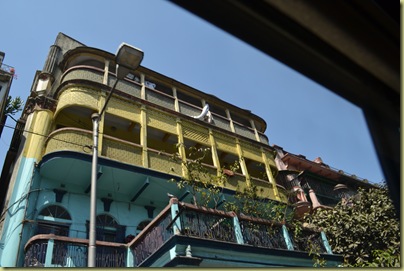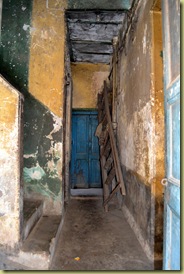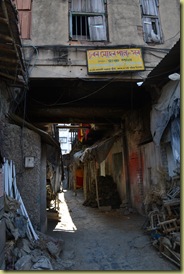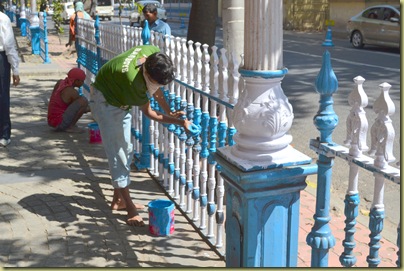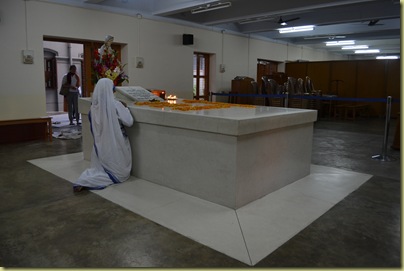We are finishing off our few days in India with a brief trip to Kolkata (which was of course Calcutta until 2001 when the name was changed). To get here from Darjeeling, we could either have driven for 12 hours or fly for 1 from Bagdogra Airport (guess which we chose).
As a brief diversion, the sign above was on display outside the airport VIP lounge and it says a lot about the way India is managed. It details the 71 categories of people (some individually) who are allowed to use the lounge. A similar list adjacent to the security point details those exempt from any form of security check and another on the roads, lists those who do not have to pay toll fees. India is a very layered society and these detailed lists are evidence of that.
Kolkata is on very few tourists visiting list and that is a pity because this city of officially 17 million people (in reality at least 20 million), is quite astonishing and if you have the right guide and the correct tour, it may well become a place you will want to come back to for a longer visit.
When our guide (Anup Kumar Saha contact anupsaha808 at gmail dot com) saw the list of places our tour company said we would be visiting, he said that he would take us to those if we wanted but we could also choose to let him take us around his Kolcata which we might find more interesting – we took his advice and had the most amazing and educational day.
Jain Temple
Built in 1867, the Jain Temple is one of the
most astonishing buildings we have every seen as is evidenced by Pat’s reaction as we
got our first glimpse of it.
It is in fact four temples within one complex but each of them is quite magnificent.
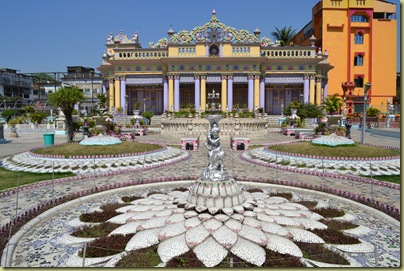 and as with many places in Kolcata, whilst it is a tourist destination, there are not many tourists and hence it is not crowded.
and as with many places in Kolcata, whilst it is a tourist destination, there are not many tourists and hence it is not crowded. 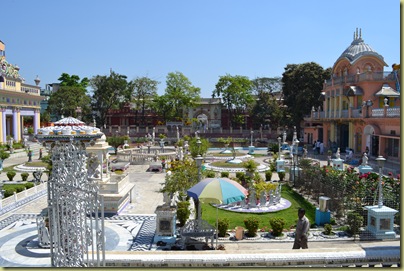
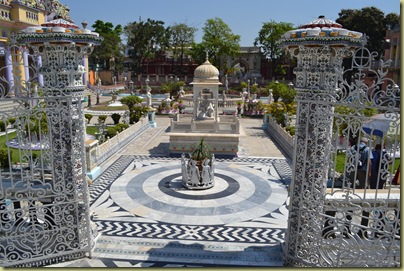
The grounds are full of statues and art
which really are quite lovely.
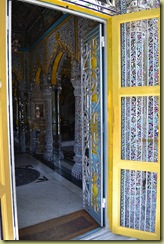 Photography is not allowed inside the temples themselves and so a feel for their astonishing decoration has to be gained through these photographs which were taken outside of the front doors.
Photography is not allowed inside the temples themselves and so a feel for their astonishing decoration has to be gained through these photographs which were taken outside of the front doors.
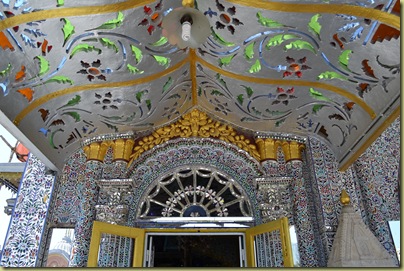 The front gate to the temple is a piece of amazing ironwork with a wicket gate through which we left when the temple closed for lunch.
The front gate to the temple is a piece of amazing ironwork with a wicket gate through which we left when the temple closed for lunch.
We were given a detailed explanation of Janism whilst there and those who had come to worship were untroubled by our presence or our wish to take as many photographs as as we could.
The Marble Palace
Kolcata has a number of forgotten palaces and the Marble Palace is one of them. Photography is not allowed within the walls so all I could record was the guard at the front gate – the first security guard I have ever met armed with a spear to deter intruders.
I have found a couple of photographs of the interior
on the web – here a first floor atrium corridor
and here the Ballroom – this picture was taken in the 1930s (hence B&W) and the room was in far better condition then than it is now. The room has large mirrors at each end which would have reflected the candle light of those days rather nicely.
The house is still lived in and the public areas contain a vast array of objet d’art without any sense of logic about what is there (two Ruben’s painting, a large Rosewood sculpture of Queen Victoria, two large Chinese vases, numerous statues, pool tables, an amazing hand cut marble floor etc). We were told that people coming out to India in the 1700s and 1800s brought things with them which they had picked up cheap in Europe with the intention of selling them to the local wealthy classes who were said to be very keen on collecting European art for its status value. Hence people purchased anything that arrived on the next boat rather than to a plan.
It really was a most astonishing place and if there were to be only one place which I could go back to in Kolcata, this would be it.
The Potters Quarter
Off Chitpur Road, a lane takes you into the potters’ area, Kumartoli, which is an astonishing open-air workshop where statues of gods and goddesses are moulded by hand for use in the numerous religious festivals.
Having briefly stopped at a shop making
wedding hats (no blog comments on this
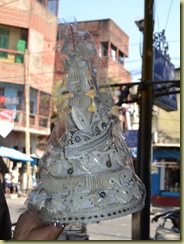
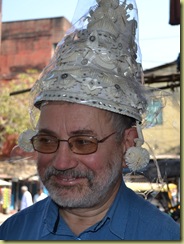 picture will ever get published!) we went up a side alley and were immediately in the middle of an enormous potters workshop – the photographs I took express far better what we saw than words can.
picture will ever get published!) we went up a side alley and were immediately in the middle of an enormous potters workshop – the photographs I took express far better what we saw than words can.
The sculptures start with a base of straw to create the bulk of the form. The straw is shaped and tied with twine to give a rough version of the final shape. Mud traditionally from the Hoogly, is layered onto the straw forms and smoothed into a final depiction of the god or goddess. The finest details including facial features and fingers are left until the end.
Here the maker is trying to get the sizes of limbs correct by using different numbers of strands.
Eventually a complete statue is created
and it is repeatedly painted with uncoloured
clay to achieve a smooth surface
which is then painted.
Some of the statues are so large that they
are made in the street and some are made in small simple mass production workshops.
St John’s Church Kolcata
St John’s Church and its buildings and grounds is the history of early Calcutta.
The church (which it is said is modelled on St Martin’s in the Fields in London)
was built on land given to Warren Hastings in 1783 by a local Maharaja, it was said as a
gesture of thanks for the help the East India Company gave him in getting into power.
The inside of the church is very airy with
large doors on the side of the aisles to allow air to flow through.
The altar is beautifully decorated and there is
a famous painting by Zoffany of The Last Supper featuring locals from the Calcutta of the 1780’s as Jesus and the Apostles.
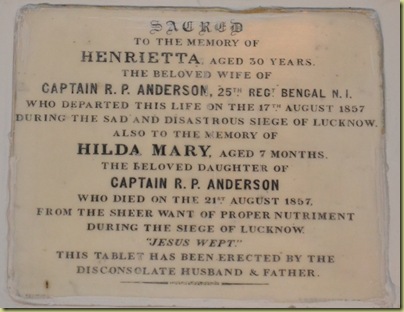
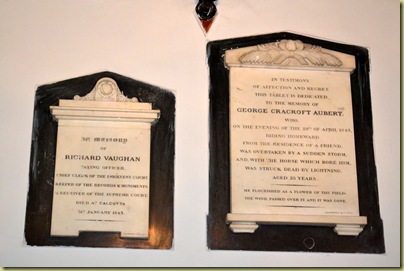 Memorial plaques on the walls record the life and demise of people of the era.
Memorial plaques on the walls record the life and demise of people of the era.
In an office to one side,
is the original chair sat in by Governor General Warren Hastings and a safe dating from that period.
The table on which the Charter of Calcutta was signed when Robert Clive took Calcutta back from the Bengali Nawab after the Battle of Plassey in 1757 takes pride of place in the room.
In the grounds of the church is a memorial to the Black Hole of Calcutta – it is not the original monument and this version was moved here in 1940.
The Black Hole (probably a cell) was in Fort
William which was demolished many years ago and all that is left today is a brass line in the steps of the General Post Office
plus a plaque on a nearby wall.
Also in the grounds is Job Charnock’s Mausoleum – he was thought (and still is by many) to have been the founder of Calcutta through his employ with the East India Company and he had a rather colourful life.
His inscription says: “In the hands of God Almighty, Job Charnock, English knight and recently the most worthy agent of the English in this Kingdom of Bengal, left his mortal remains under this marble so that he might sleep in the hope of a blessed resurrection at the coming of Christ the Judge. After he had journeyed onto foreign soil he returned after a little while to his eternal home on the 10th day of January 1692. By his side lies Mary, first-born daughter of Job, and dearest wife of Charles Eyre, the English prefect in these parts. She died on 19 February AD 1696–7.
There is also the grave of Francis (Begum) Johnson in a nearby building and the inscription records her
four marriages in Calcutta and the lives and fates of her children during the 18th century.
Life on the streets of Kolcata
One of the harsh facts about Kolcata is that there are millions of people living either in Shanty Towns or on the streets and thousands more arriving every day.
In our short time in Kolcata, we saw a lot of the streets and hence we took away with us many images which record the vibrancy, chaos and colour of the city. These images also record the harshness of street life and the difficult existence most people there have.
Wherever there is a patch of spare pavement, someone erects a shop and sometimes it doubles up as a home.
Above are a couple of the numerous book stalls in the University area.
This is a plastic recyclers shop – recycling is big business in Kolcata. If there is not enough
space in the shop, then they take over the pavement and road as well.
The markets are very lively and colourful
and anyone who pauses in their stride is treated as a firm customer who only needs that little bit of persuasion to buy whatever is on sale – prices are often set and we were told, bartering was not the done thing at these stalls.
Many streets have water pumps on them which supply water for drinking and bathing to
those living on the streets or in “homes” with no running water.
These children are refilling containers (including water bottles) for resale. The problem with all of this water (from the point of view of a delicate western stomach) is that the water comes from the River Hoogly which runs through the city and it is a distributary of the Ganges which is one of the five most polluted rivers in the world in terms of Fecal Coliform levels. Indian stomachs may be use to this water, western stomachs certainly are not.
Sugar Cane juice sellers are quite common
be they mobile
or operating from the street side
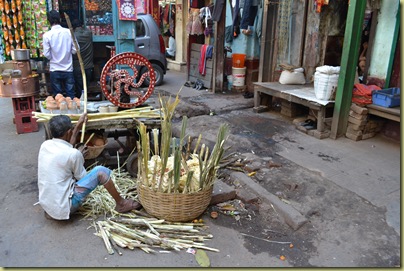
or on the street itself and they of course buy their sugar cane from
another street seller
If you have a trolley, then you can sell anywhere in town – here coconut juice is being sold from a tricycle barrow just outside of the Jain temple.
Whilst there is poverty, there also is entrepreneurial spirit – if this were to be measured by the numbers of self employed, the score would be high.
If you can find a piece of unused pavement, then you can set up a shop and maybe a home
A piece of wall will do just as well (here selling shoe soles but there is still space for the family altar.
Some walls and a trees provide the right structure to create a roof
over a shop or stall. If there is no pavement or wall space,
then there is nothing to stop you setting up shop on the street
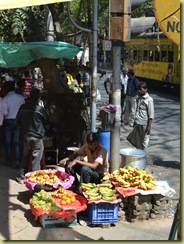 and of course that is what many people do.
and of course that is what many people do.
Some people work and live in the same place
and these metal work shops provide accommodation as well as work even if the bed is directly on top of the stock.
These people may not look like they are doing much but they are another example of how there is always some way to make a rupee. Indians seem to have a loathing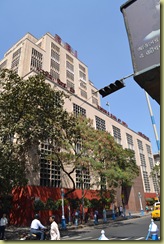 of old bank notes and we often had notes refused because they were old, dirty or torn. Based close to the Bank of India building, they exchange old notes for new and make their living by taking a percentage off the top. Next to them are people who seem to do the same with coins
of old bank notes and we often had notes refused because they were old, dirty or torn. Based close to the Bank of India building, they exchange old notes for new and make their living by taking a percentage off the top. Next to them are people who seem to do the same with coins
but why we never understood because there are few coins in circulation, the smallest note being a 5 rupee (worth about 7p in 2013).
Transport in Kolcata
India seems to excel in using every possible type of transport with as much noise as possible and a total lack of recognition to any form of highway code.
Kolcata is one of the few cities in the world where Pulled Rickshaws are very common,
cost depends upon distance, load and haggling skills and we saw them being used for passengers as well as freight.
There are also Cycle Rickshaws
which are used for freight,
for passengers and also
as selling points such as this Ice Cream vendor. The Ambassador car is extensively used as a taxi, colourful buses are everywhere
and some of the oldest and most battered trams we have ever seen force their way up and down the main streets.
Goods are carried on the standard design of Indian lorry or cycle rickshaw
or the equivalent of the “White Van”
and porters of course exist for smaller
amounts of produce.
Buildings in Kolcata
I always get pleasure at seeing interesting buildings when we travel (or get annoyed at some of the monstrosities we find) and Kolcata has lots of rather nice but very dilapidated buildings plus a few nice buildings in good order.
Amongst those we saw were:
The Writers Building built in 1777 – so called because it was built to house the administrative arm of the East India Company.
The Victoria Memorial Hall built as a monument to the Empress of India
and a couple of tired travellers who happened to be resting on the wall.
Kolcatta Town Hall – built in 1813 as a hall for public use, it became an administrative building in the 1860s
Kolcata High Court built in 1872 is a based on the design of the Cloth Hall in Ypres
The detailing around the top shows some Arabic influence in the design.
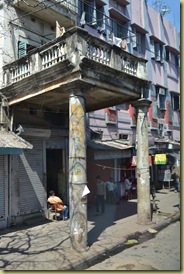 These three photos are included just because I like the chaotic decay in the buildings and their faded colour.
These three photos are included just because I like the chaotic decay in the buildings and their faded colour.
There are a surprising number of Art Deco buildings in Kolcata – not necessarily pure Art Deco but definitely showing the influence
The metro cinema was built in 1935 and shows pure lines. It is in a very run down state however despite a contentious plan to turn it into a multiplex. Some of the nicest building fronts are
hidden away behind posters which is rather disappointing.
Some buildings such as these show “influence” rather than pure design as in the offices above or the clock tower of the
Mother Dairy building which was probably a great building in its day.
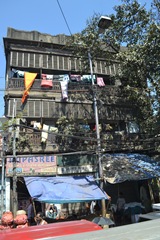 The local climate is very hot and sultry in summer and so balconies are common on residential buildings built before the days of air conditioning
The local climate is very hot and sultry in summer and so balconies are common on residential buildings built before the days of air conditioning
Although much of the city is in poor repair, it
has visual character, as in the hallway and side street shown above.
I have no category to fit the next picture into but felt I had to include it because it is sounusual. Taken near the Central Bank, the railings are being painted but the painters are using their hands as the brushes – they were doing a good job.
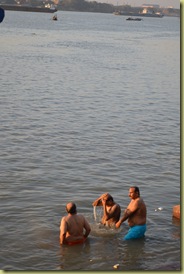 Although the river running through Kolcata is called the Hoogly, since this river has the Ganges as its source, it has a certain holy status. Hence bathing in the river is something which Hindus want to do and there is a certain bathing ritual to be performed.
Although the river running through Kolcata is called the Hoogly, since this river has the Ganges as its source, it has a certain holy status. Hence bathing in the river is something which Hindus want to do and there is a certain bathing ritual to be performed.
 The river itself is a major trade artery but this
The river itself is a major trade artery but this
does not stop one of the oldest forms of ferries being used as transport to cross it.
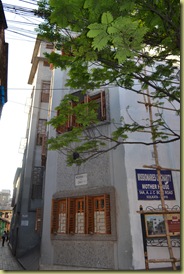 Finally – there are two phrases on the lips of routine tourists when they visit this city. These are the Black Hole and Mother Teresa. The former has already been covered and so here is the latter. The convent is an unassuming building on a main road, the entrance being up an alley. Photography inside is restricted to a
Finally – there are two phrases on the lips of routine tourists when they visit this city. These are the Black Hole and Mother Teresa. The former has already been covered and so here is the latter. The convent is an unassuming building on a main road, the entrance being up an alley. Photography inside is restricted to a
statue and here tomb and there is not much else to see – which is probably quite appropriate since why should it be a tourist venue?
And so ends our brief trip to India (or rather it ends after a flight from Kolcata to Delhi and another to London). Taking part in the Polio vaccination programme was an amazing experience and we hope to do so again some time in the future. Also we loved Kolcata and would love to visit it again for longer.
